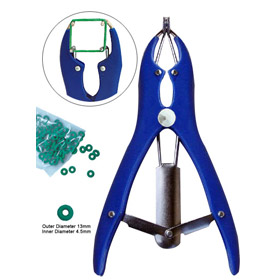Small Animal Surgery Kit is used for Small Animals Surgery like Dogs, Cats, Pigs, and many other small animals.
Surgery kit contains all necessary tools to perform complete surgery. All Tools are made from Surgical Grade stainless steel and used by professionals.
Medical Tools 24 Instruments is compiled for Small Animal Surgery Kit.
Small Animal Surgery Kit Includes:
- Iris Scissors 11.5cm
- Mayo Scissors TC 15cm
- Scalpel Handle #3
- Scalpel Handle #4
- Olsen Hager Needle Holder TC 16cm
- 2 Mosquito Forceps Curved 12.5cm
- 2 Mosquito Forceps Straight 12.5cm
- 2 Kelly Forceps Straight 14cm
- 2 Kelly Forceps Curved 14cm
- 3 Dressing Forceps 16cm
- Dressing Forceps 1:2 16cm
- 3 Backhaus Towel Forceps 11cm
- Adson Forceps 12cm
- Adson Forceps 1:2 12cm



